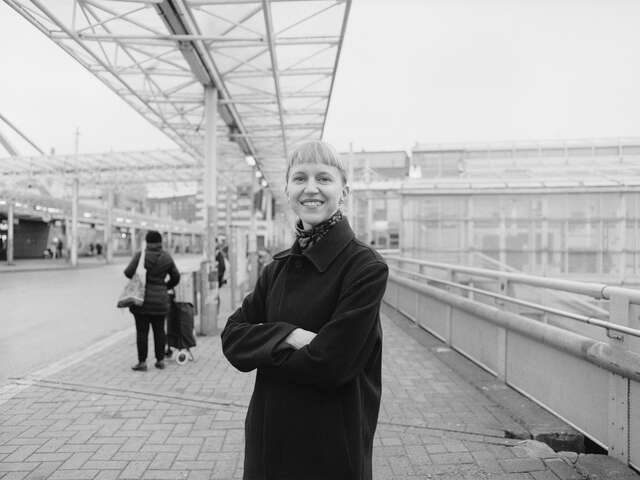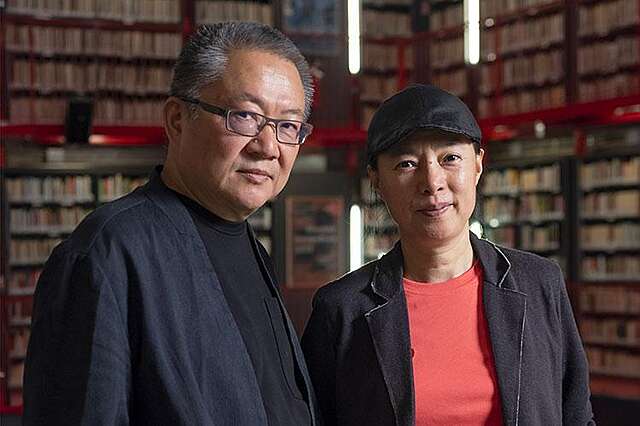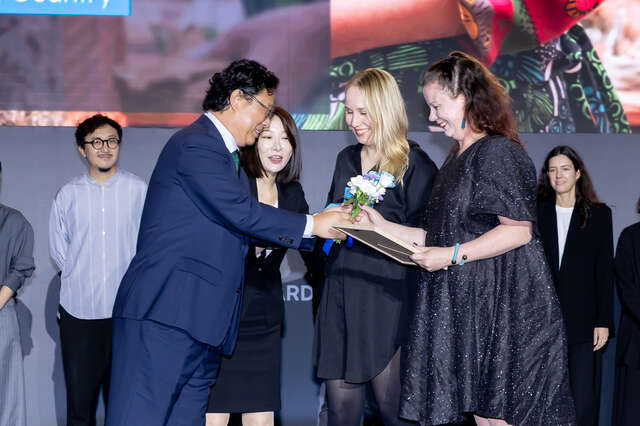Finimalism Perspective: Maybe a piece of clothing can also change?
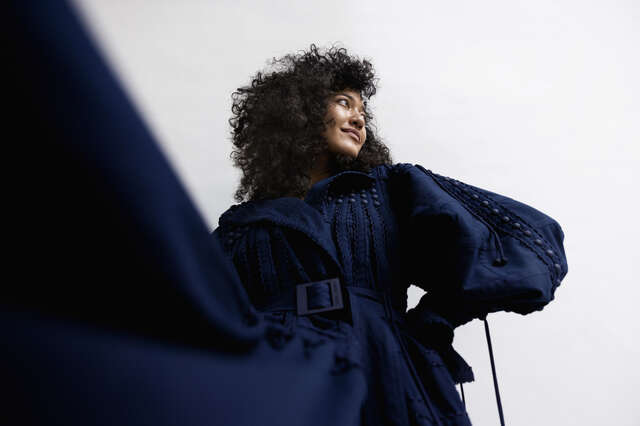
Anton Sucksdorff
Finimalism, a joint project between Finnish architecture, design and fashion, publishes a Journal series that invites prolific Finnish architects and designers to share their perspectives on their professions. We share some of the articles on our site. Sofia Ilmonen was interviewed by Krista Lehtonen for the first Journal, entitled ‘Rethink’.
Does creativity thrive on abundance or scarcity? The work of acclaimed fashion designer Sofia Ilmonen strongly argues for the latter. While her creations exude a dreamy and imaginative appearance, they are rooted in a systemic approach to sustainability.
I worked in London for a decade in fashion as a dressmaker and pattern cutter until the pace in the core of the fashion business started to feel like too much. The thinking surrounding sustainable development was always important to me, but it was in London where I understood that a single employee’s influence is quite limited. This realisation made me want to work in a different way, more in line with my values.
I applied and was accepted to Aalto University’s master’s programme in fashion. During my studies, I was thinking about how I could find a completely new entry point into making clothes and fashion. A more sustainable fabric can always be found, but is that a big enough change? It felt like it wasn’t. I longed for a more systematic change, and this involved aiming not only at better materials but also smaller volumes.
I finally came up with the thought of constructing a clothing item from square pieces, the order of which could be altered even endlessly. The piece of clothing could be taken apart and reassembled – with changing silhouettes, but always using the same building blocks. Fashion lives and changes. Maybe a piece of clothing can also change?
In my master’s thesis, The Sustainable Possibilities of Transformable Design, I considered the opportunities of modular clothing from the viewpoint of sustainable fashion. At the same time, I was putting together my collection during the coronavirus pandemic. From time to time, I stopped to think whether anyone would understand my idea, but I went ahead and grabbed a pile of square pieces, and started assembling the collection, piece by piece.
Maybe that is why I felt some disbelief when I was selected as a finalist in the prestigious Hyères competition, and all the more so when I won the festival’s sustainability prize. It started to feel like my idea ought to be developed further. I founded a company carrying my name and got to work.

My background in dressmaking has proven to be extremely useful in my design work. My mother taught me how to sew already as a child, but it was specifically my years of working in London for Alexander McQueen that most influenced the modular structure of my clothes. Working as an atelier seamstress, I was impressed by how highly esteemed technical skills/hand crafting were.
My approach to fashion design is sometimes even technical. While working on my master’s thesis, I was asked whether the modules I created had become a limitation for myself. I don’t feel like that myself, on the contrary. I feel like a better designer when I work within the boundaries I created.
A bad fit is one of the most common reasons to give up a piece of clothing. That is why I wanted to create unsized clothing, which is then formed on the body to find the right fit. It doesn’t take anything away from the beauty of the clothes. I love ruffles, voluminous hems, dramatic moods, and colours. My aesthetic is quite the opposite to typical Finnish minimalism.
I want to make romantic and feminine clothes, which are at home on the fashion circuit and catwalks, as well as in many wardrobes. The modifiable clothing resonates with the human longing for novelty. When the same dress can be transformed into many looks, we can create beauty with less. I also hope that my clothes can inspire many people to examine their own wardrobes with new eyes.
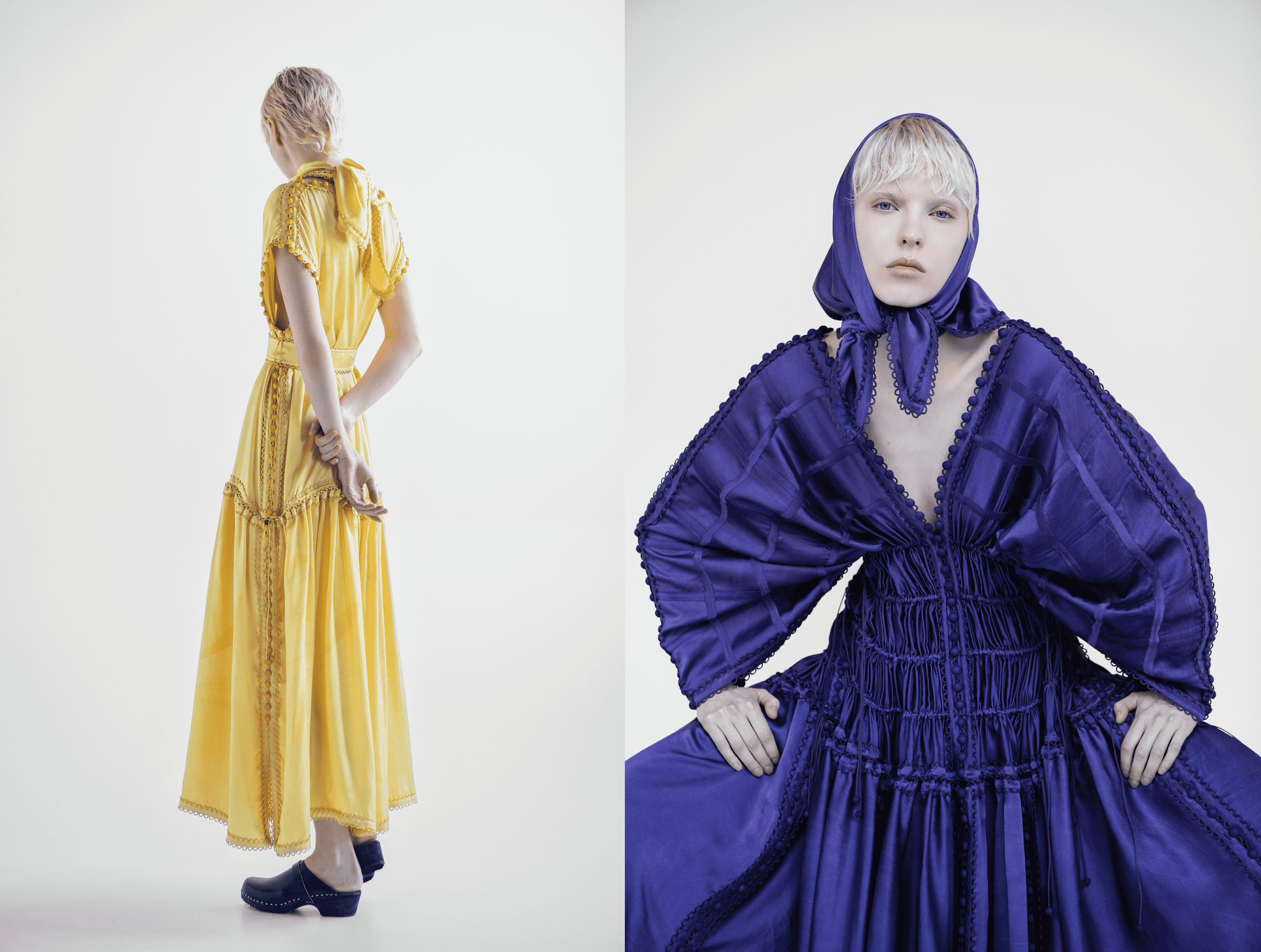
As a designer, I find it easier to create clothing in the midst of abundance, when the concept is sustainable through and through. For me, this is a way for a designer to assume responsibility. I don’t wish to bring more garbage into the world, but rather give birth to something that also produces a sense of meaning for its user, creating beauty that goes beyond trends.
At the same time, there are also distinct challenges in this approach. I have given a great deal of thought to how to sell my idea to buyers, who are not accustomed to seeing clothing from this angle. When you’re running a company, you can’t just focus on how good you are as a designer. Ideas need to convert to business, and I need to make what I do into a product.
The price of a garment is a story of its own. Many factors influence it, not all of which are obvious. Fabric is cheaper if you have the resources to buy hundreds of metres of it. I actively consider how I could speed up the production process without compromising the handcrafted beauty that I so highly value. A handmade product costs money, but I like to think that there is more to my garments than meets the eye. They also include all the potential variations that become possible with the modular structure.
Consumers have become used to a certain fashion cycle and learned to crave new stimulation, even if the pace should really be slowed down. We have been taught this. Now there is a wake-up call, and major players in fashion are increasingly discussing how they plan to step aside from the so-called fashion calendar with their pre-collections. In practice, however, it feels that there are a lot of words and few actions.
I was recently asked to take part in a sample sale to sell my old samples, but I had to decline. I actually didn’t have any. When I design a new collection, I use as many of my old modules as I can – I am still working with the same prototype squares as I did in my master’s thesis. I disassemble and reassemble, and try to see what new I can construct.
And when I work like this, I don’t even need to give up my old silhouette. If I want, I can just do it over and over again.
The article was first published on Finimalism.fi.
Finimalism strengthens Finland's country image through architecture, fashion and design, renewing the story of Finnish Design and highlighting Finnish creative talent. Finimalism is a collaboration between three organisations – Archinfo, Finnish Design Info and Fashion Finland. The joint project is made possible by EU structural funding.
